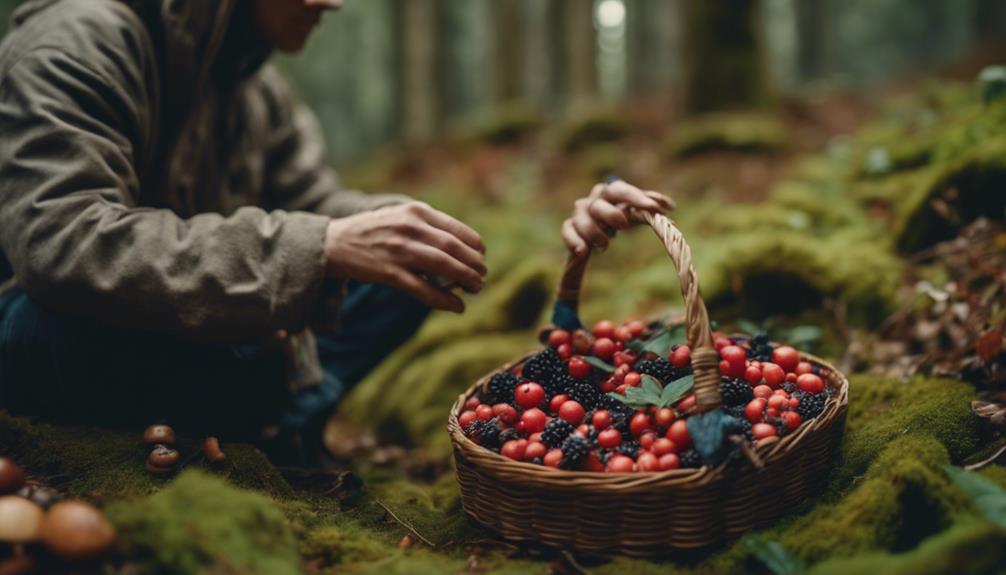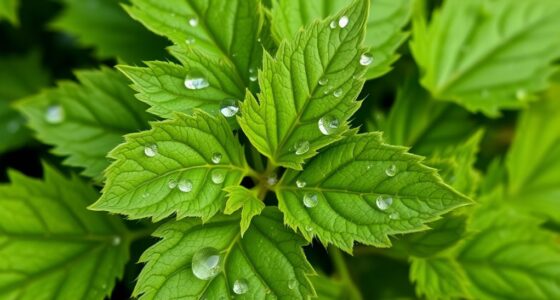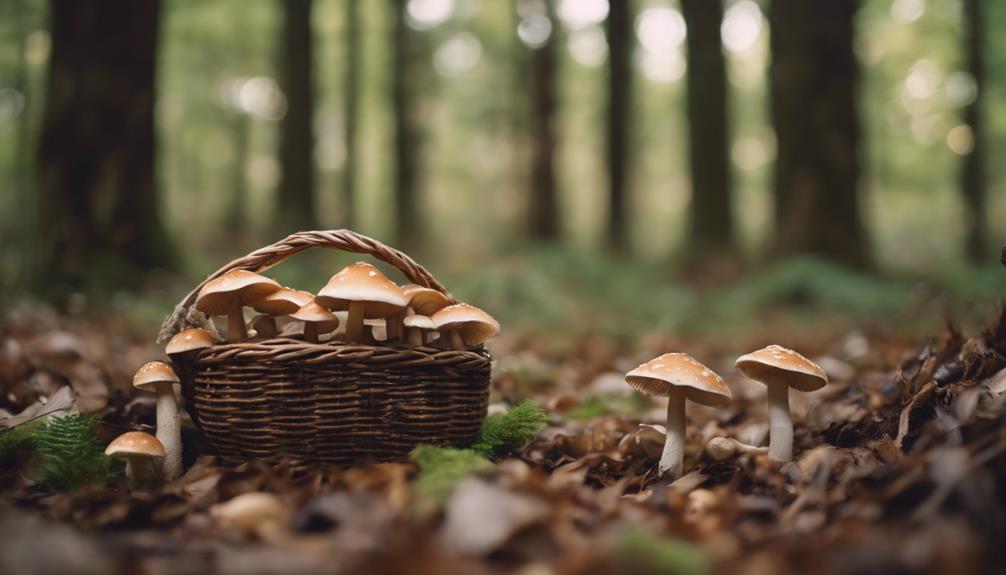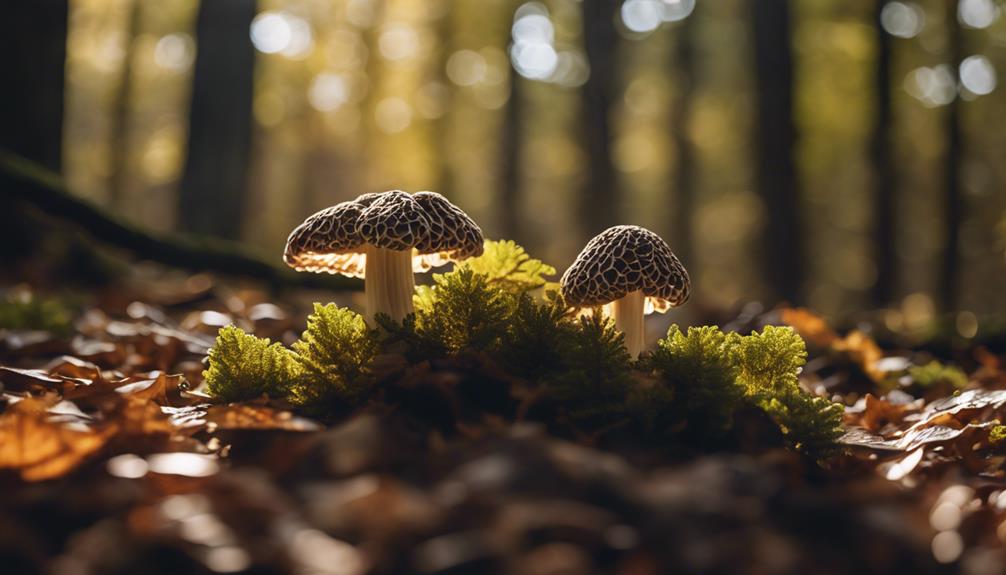To safely master foraging, make sure to always carry a field guide for plant identification, wear appropriate clothing, and avoid areas that are polluted. It is important to be knowledgeable about toxic plants such as poison hemlock and recognize symptoms. Take the time to learn about local plant species, carefully select your foraging locations, and seek advice from experts. Handle foraged food with care and show respect for nature. When identifying edible plants, pay attention to leaf shape, flowers, and any regional variations. Develop sharp observation skills to ensure safe foraging practices. If you are hunting for mushrooms, start with the ones that are easily recognizable, consult local guides, and consider attending workshops. Forage sustainably in different seasons and always make sure to cook wild mushrooms thoroughly before consuming them. Urban parks and rural landscapes offer unique foraging opportunities that should be explored. Increase your knowledge about plant recognition, mushroom foraging, and safety precautions by delving deeply into these topics.
Key Takeaways
- Learn to identify edible plants using leaf shape, flower structure, smell, and color variations.
- Understand regional plant differences to enhance foraging skills.
- Join workshops or societies to differentiate safe and toxic mushrooms based on cap shape, gills, and spore color.
- Forage sustainably by respecting local ecosystems and cooking wild mushrooms thoroughly.
- Support ethical practices when buying foraged food, checking for certifications and choosing local, small businesses.
Safety Precautions for Foraging
When foraging for food, safeguard your safety by following these essential precautions. Plant identification is important to avoid poisonous plants that can pose serious health risks. Always carry a reliable field guide to assist in identifying both edible and toxic plants accurately. It's significant to be able to differentiate between harmless vegetation and potentially dangerous species.
Wearing appropriate clothing and footwear is another critical safety measure to protect against environmental hazards. This includes safeguarding against exposure to irritants such as poison ivy or thorns. Additionally, stay clear of areas with pollution, pesticide use, or other contaminants that may affect the safety of the plants you intend to forage.
Avoid foraging near roadsides, industrial sites, or areas prone to chemical runoff, as these locations may contain harmful substances that can contaminate edible plants. Finally, always inform someone of your foraging plans and location before heading out to ensure assistance is available in case of emergencies.
Taking these precautions will help you enjoy a safe and successful foraging experience.
Identifying Edible Plants
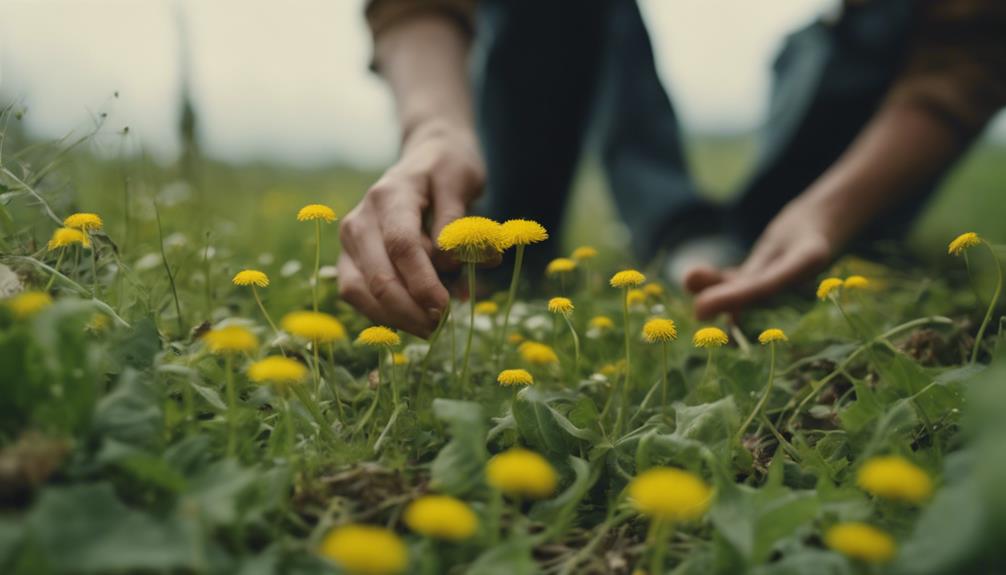
When identifying edible plants, pay attention to features like leaf shape, flower structure, and growth habits to determine their safety for consumption.
Specific indicators such as smell or color can help you differentiate between plants that are safe to eat and those that are toxic.
Understanding regional variations in plant species is essential for safe foraging practices, and enhancing your plant identification skills through practice and field guides will improve your ability to distinguish between edible plants and their potentially harmful counterparts.
Plant Recognition Techniques
Developing a keen eye for detail and practicing identification skills are essential for accurately recognizing edible plants through plant recognition techniques. Observation of leaf shapes, flower structures, and growth patterns plays a critical role in distinguishing edible plants from non-edible ones. Specific indicators such as color, smell, texture, and growth habits further aid in this differentiation process.
By honing your identification abilities, you can improve your capacity to confidently identify safe wild edibles. Utilizing regional field guides and online resources can enhance your plant identification knowledge, providing valuable information for safe foraging practices. Mastering plant recognition techniques is key to successfully identifying different environments and foraging for food with certainty.
Safety Measures for Foraging
To guarantee your safety while foraging, accurately identifying edible plants involves noting distinctive features like leaf shape, stem structure, and growth patterns. When venturing into the wilderness to search for wild edibles, keep the following in mind:
- Leaf Characteristics: Pay attention to the shape, color, and arrangement of leaves. Some edible plants have unique leaf patterns that distinguish them from toxic look-alikes.
- Stem Structure: Look at the texture, thickness, and height of the plant's stem. Edible plants often have sturdy and well-defined stems that support their growth.
- Growth Patterns: Observe how the plant grows and spreads in its natural habitat. Understanding the typical growth patterns of wild edibles can aid in accurate identification.
- Regional Field Guides: Consult local resources and field guides specific to your area. These guides provide valuable information on wild edible plants native to your region, helping you expand your plant identification knowledge.
Mushroom Foraging Tips

When starting a mushroom foraging journey, it's essential to sharpen your identification skills to differentiate between safe and toxic varieties.
Begin by acquainting yourself with easily recognizable mushrooms like morels or chanterelles, suggested by experienced foragers.
Remember to consult local field guides and attend workshops to deepen your knowledge and guarantee a successful foraging experience.
Identifying Edible Mushrooms
Identifying edible mushrooms for foraging requires careful observation of key characteristics such as cap shape, gills, stem structure, and spore color.
To help you in your mushroom foraging journey, here are some essential tips:
- Cap Shape: Look at the shape of the mushroom's cap. It can be convex, flat, or even funnel-shaped.
- Gills: Examine the gills underneath the cap. Are they crowded together, free, or attached to the stem?
- Stem Structure: Note the stem's characteristics, including its thickness, texture, and whether it has a ring or not.
- Spore Color: While more advanced, determining the spore color can be vital. This involves taking a spore print by placing a mushroom cap on paper to observe the color of the released spores.
Safety Precautions Foraging
Always carry a reliable field guide when foraging for mushrooms to accurately identify edible varieties and guarantee your safety.
When gathering wild food like mushrooms, it's essential to be cautious of toxic look-alikes that can cause severe illness if ingested.
To enhance your mushroom identification skills and learn about potential dangers, consider joining local mycological societies or workshops.
Additionally, wearing appropriate clothing and gear, such as gloves and a mushroom knife, can help ensure safe mushroom foraging practices.
If you ever find yourself uncertain about a mushroom's edibility, don't hesitate to consult with experienced foragers or mycologists for guidance.
By taking these safety precautions while foraging for wild mushrooms, you can enjoy the adventure of exploring nature's bounty without compromising your well-being.
Cooking With Wild Mushrooms
Enhance your culinary skills with wild mushrooms by incorporating foraged treasures into your favorite dishes. Cooking with wild mushrooms can elevate your meals to a whole new level of flavor and sophistication. Here are some tips to help you make the most of these natural delicacies:
- Identification is Key: Learn to differentiate between edible and toxic mushrooms by observing key identifiers such as cap shape, gills, and spore color.
- Consult Field Guides: Utilize regional mushroom field guides to enhance your identification skills and gain knowledge about local species.
- Forage Sustainably: Practice sustainable foraging by only harvesting a small portion of mushrooms to protect the ecosystem and ensure future growth.
- Cook Thoroughly: Avoid consuming raw wild mushrooms and always make sure thorough cooking to eliminate any potential toxins and enhance flavors.
Seasonal Foraging Recommendations
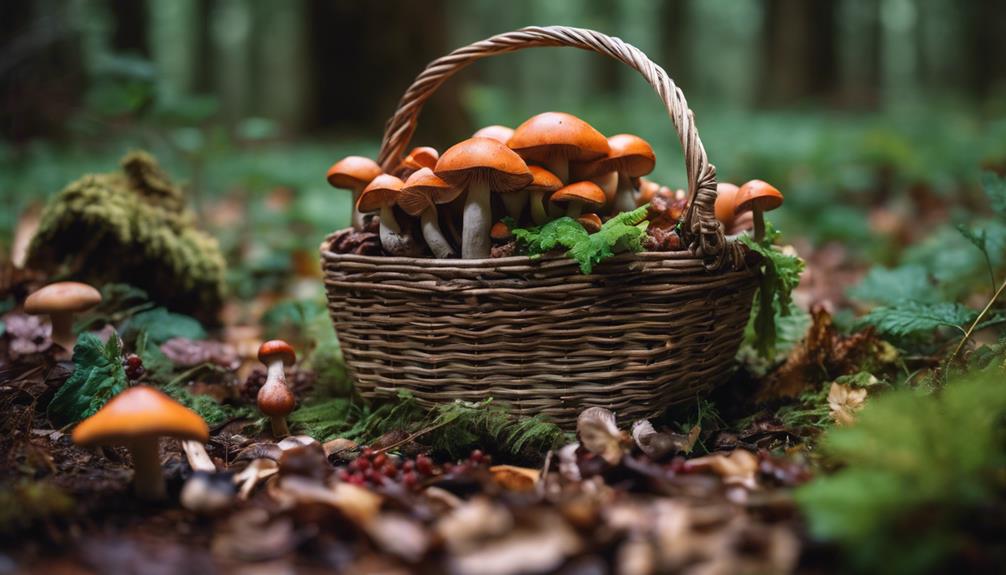
When foraging throughout the year, you'll find that each season offers unique recommendations for the best wild foods to harvest. In spring, embrace the fresh greens like wild garlic and dandelion greens that nature provides abundantly. These greens not only add a burst of flavor to your dishes but are also packed with nutrients.
As summer rolls in, take advantage of the berry season by foraging for blackberries and strawberries. These juicy treats can be enjoyed fresh or incorporated into various recipes.
Transitioning into autumn, a diverse range of treasures awaits you in the form of nuts, mushrooms, and roots. Nuts like acorns and walnuts, along with mushrooms such as chanterelles, offer rich flavors to elevate your wild food experience.
Urban Foraging Locations
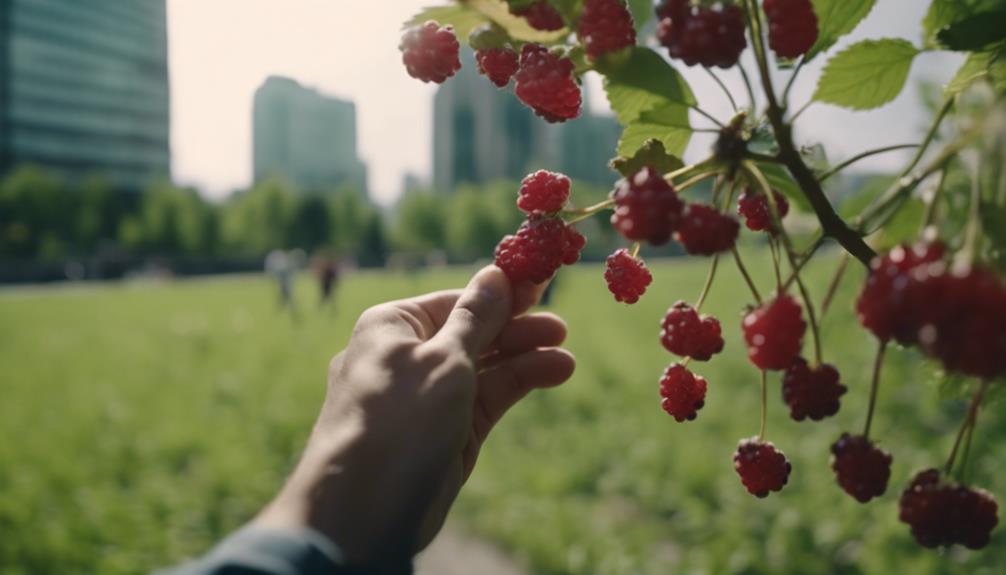
Discovering urban foraging locations can reveal a hidden world of edible treasures waiting to be found in unexpected places such as parks, green spaces, abandoned lots, and city sidewalks. When exploring urban areas for wild foods, keep an eye out for these edible wonders:
- City Parks: These green spaces often surprise foragers with a diverse range of edible plants like berries, greens, and sometimes mushrooms.
- Abandoned Lots: Neglected urban areas can harbor a plethora of wild edibles, from herbs to fruits and nuts, just waiting to be discovered.
- City Sidewalks: Even in the concrete jungle, you might find edible treasures like edible flowers or herbs peeking through the cracks.
- Green Spaces: Any green area within the city limits, whether community gardens or patches of wild growth, could offer up a bounty of wild foods for the adventurous forager.
Rural Foraging Spots
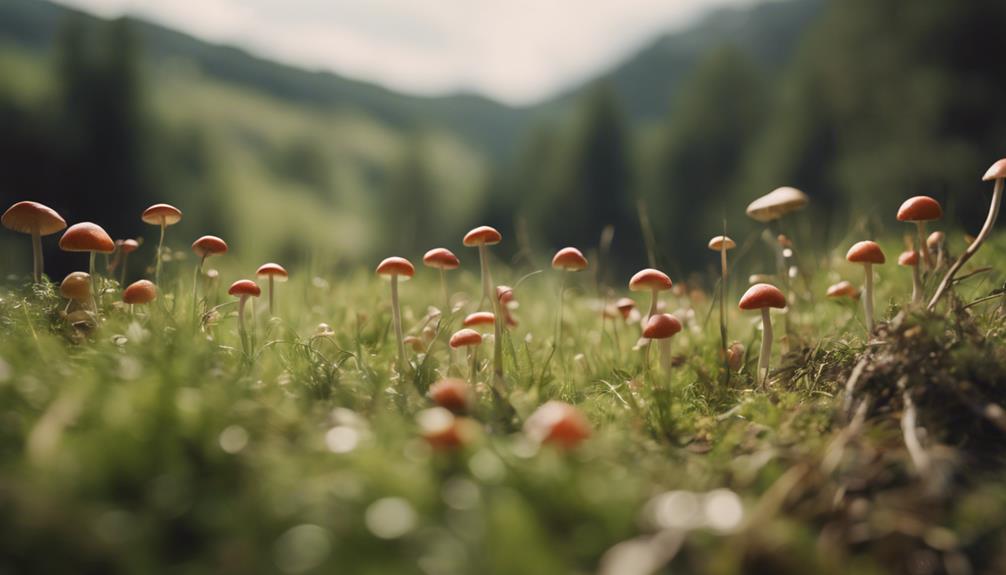
Amidst the rural landscapes lie hidden gems of abundant wild edibles, waiting to be explored and harvested by adventurous foragers. Rural foraging spots offer a diverse array of wild mushrooms and dandelion greens, among other delights. These areas, rich in natural beauty, provide a sanctuary for foragers to connect with nature and gather fresh, organic foods.
Explore the table below to discover some common wild edibles found in rural foraging spots:
| Wild Edibles | Description | Best Season |
|---|---|---|
| Wild Mushrooms | Varied species with earthy flavors, best identified by experienced foragers. | Fall |
| Dandelion Greens | Nutritious and versatile greens with a slightly bitter taste, perfect for salads. | Spring |
Venture into the forests, meadows, and mountains of rural areas to uncover these culinary treasures. The tranquility of these locations allows for a serene foraging experience, where you can discover unique and lesser-known edible delights flourishing in the wild.
Buying Foraged Food Tips
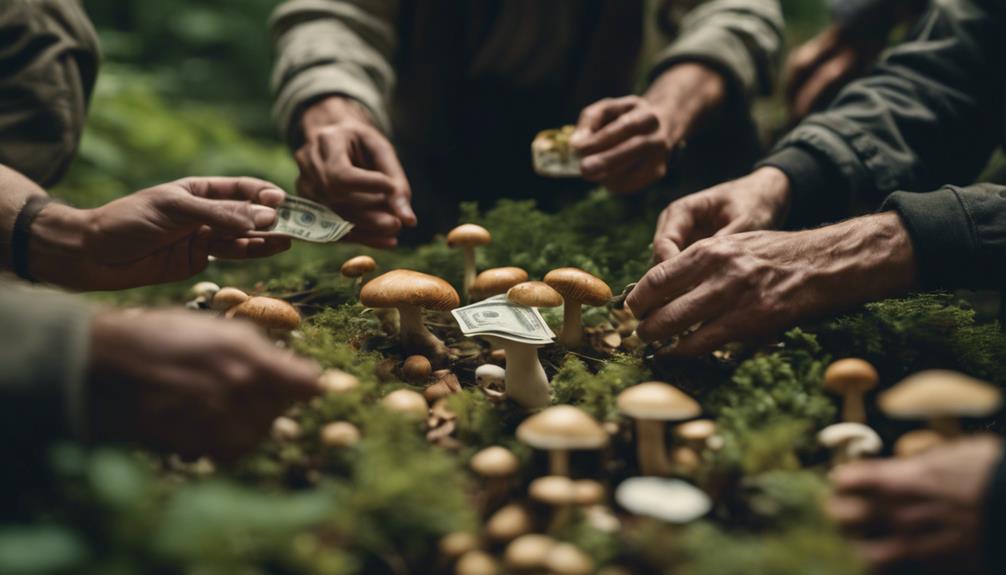
To guarantee the safety and quality of foraged food, it's essential to buy from reputable sources or certified foragers. When purchasing foraged food, keep these tips in mind to confirm you're making ethical and sustainable choices:
- Seek out vendors who follow ethical and sustainable foraging practices: Supporting responsible harvesting of wild edibles helps protect natural ecosystems and verifies the long-term availability of foraged foods.
- Check for certifications or permits: Look for indicators that the foraged food has been legally and responsibly sourced, giving you peace of mind about its origins.
- Avoid vendors selling potentially improperly harvested goods: Stay clear of products that may have been gathered in protected areas or through unsustainable practices.
- Support local foragers and small businesses: Choose suppliers who prioritize transparency and traceability in their foraged food offerings, promoting community connections and sustainable food systems.
Poisonous Plant Awareness
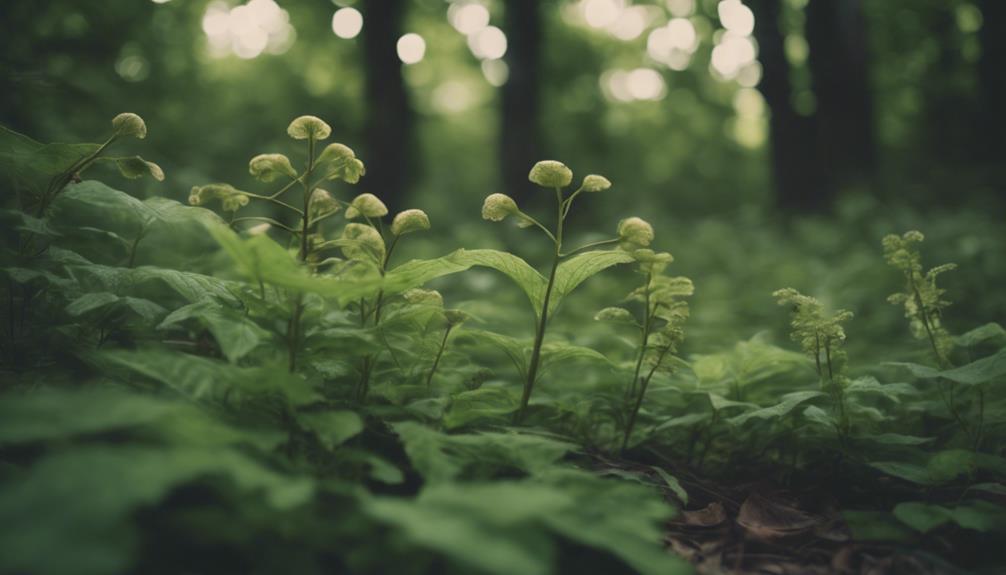
Understanding the dangers of poisonous plants is vital for safe foraging practices. While foraging for natural foods, it's essential to be aware of plants that can be harmful if ingested. Some poisonous plants closely resemble edible ones, underscoring the importance of accurate identification skills.
Common toxic plants like poison hemlock, deadly nightshade, and foxglove can pose significant risks if mistakenly consumed. Symptoms of plant poisoning can range from nausea and vomiting to dizziness and, in severe cases, organ failure.
To guarantee a safe foraging experience, proper education and caution are key in distinguishing between edible and poisonous plants. By developing these skills, foragers can mitigate the risks associated with accidental ingestion of toxic plants.
Foraging Safety Guidelines
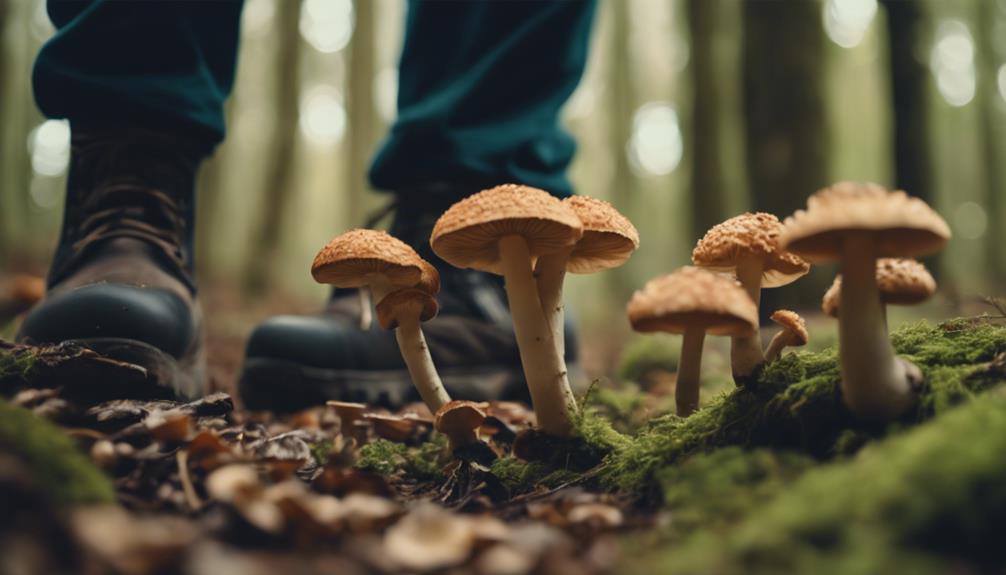
Prioritize proper plant identification to guarantee safe foraging practices and avoid consuming toxic look-alikes. When venturing into the wilderness to gather wild mushrooms or other edible plants, it's essential to follow these foraging safety guidelines:
- Educate Yourself:
Take the time to learn about local plant species and their distinguishing characteristics to confidently differentiate between edible finds and their harmful counterparts.
- Choose Your Foraging Spots Wisely:
Avoid areas that may be contaminated with pesticides, pollutants, or other hazardous substances that could compromise the safety of your foraged food.
- Seek Expert Advice:
Utilize reputable field guides or consult with experienced foragers to enhance your knowledge and reduce the risk of mistakenly consuming toxic plants.
- Handle With Care:
Practice caution by wearing appropriate clothing, using tools safely, and showing respect for the environment while honing your skills in the Art of Foraging.
Frequently Asked Questions
What Is Foraging for Food in the Wild?
Foraging for food in the wild involves gathering edible plants, mushrooms, and other wild edibles from natural landscapes. You need knowledge of plant and mushroom identification, as well as an understanding of the environment and local habitats.
How Do You Hunt for Food in the Wilderness?
To hunt for food in the wilderness, you must sharpen your tracking skills, set traps strategically, and utilize stealth to approach prey. Patience, observation, and adaptability are key traits for successful hunting in the wild.
Conclusion
Now that you have armed yourself with the knowledge and skills needed to forage for food in the wilderness, go forth and explore the bountiful world of edible plants and mushrooms.
Remember, the thrill of discovering your own food sources is as exhilarating as finding a hidden treasure.
Stay safe, keep learning, and enjoy the adventure of foraging for your next meal!

